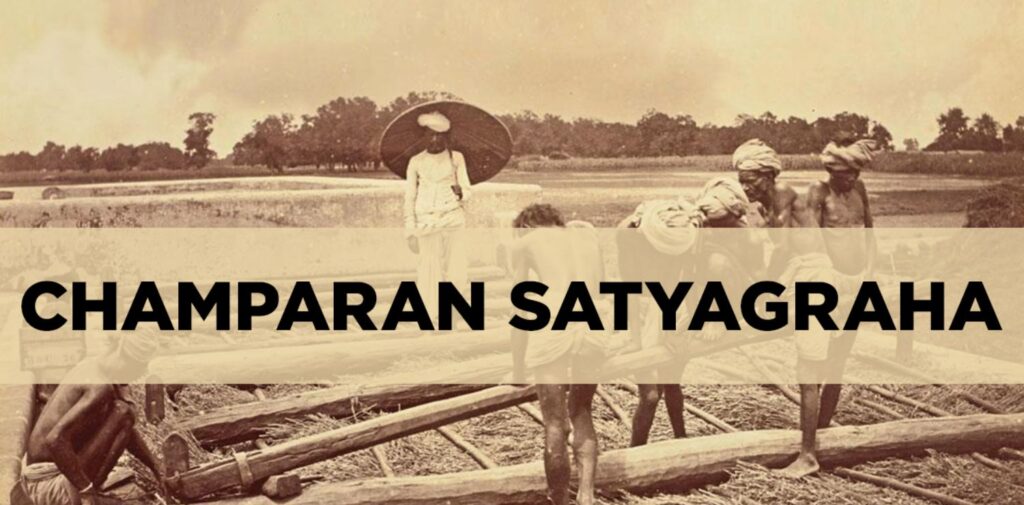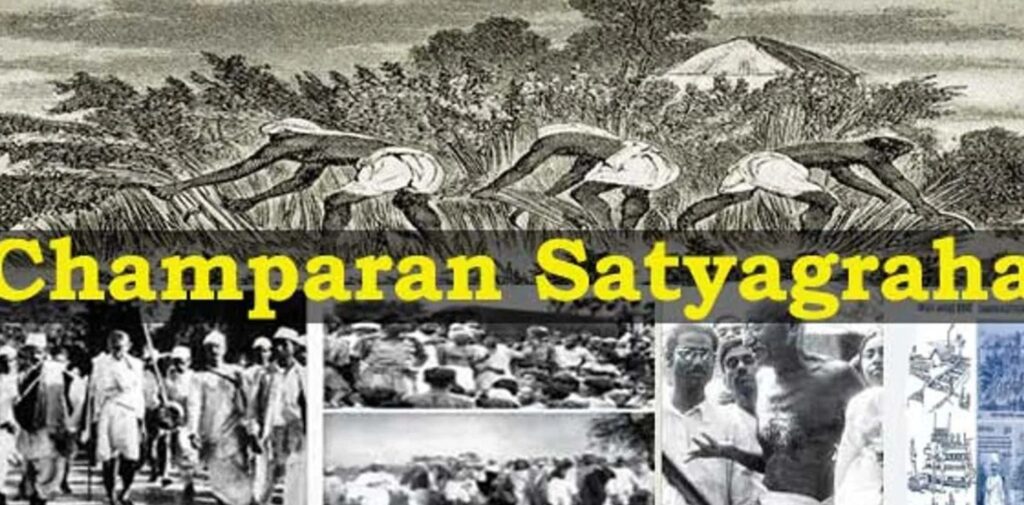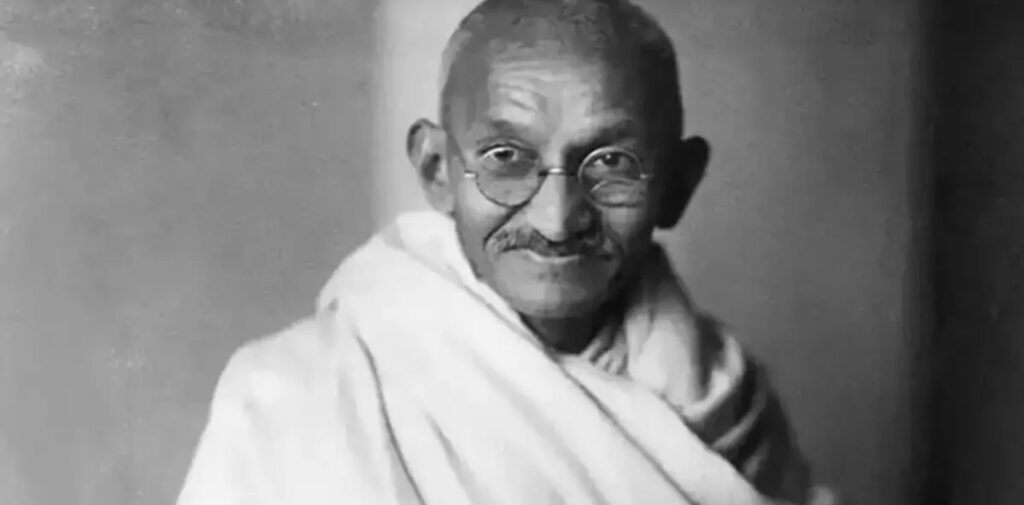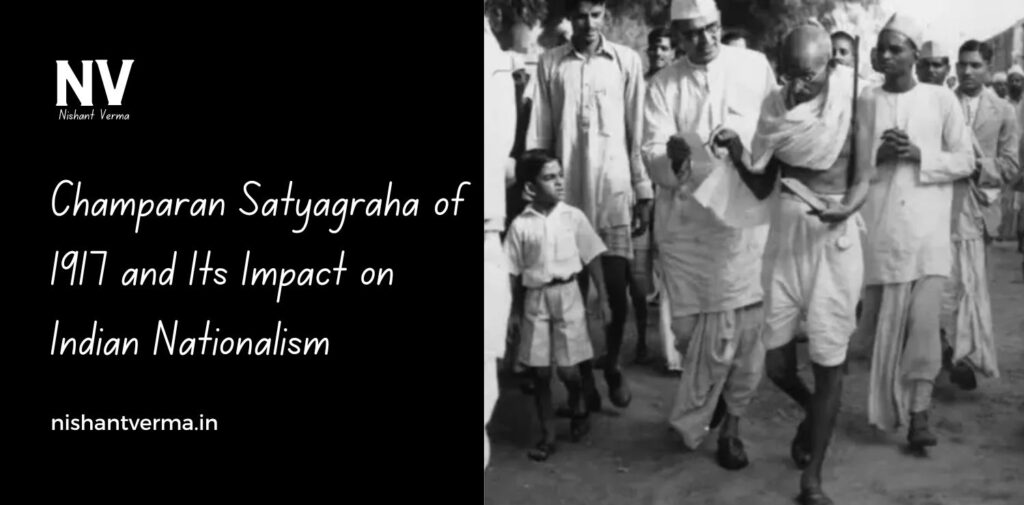The story of India’s fight for independence is full of brave struggles, passionate leaders, and important events. One such event was the Champaran Satyagraha of 1917. This was one of the first big movements led by Mahatma Gandhi, the man who would later become the face of India’s freedom struggle. It took place in the Champaran region of Bihar and played a huge role in shaping the course of Indian nationalism.
In this article, we will look at the Champaran Satyagraha, what happened during it, and how it impacted the larger movement for India’s independence. We will also examine Gandhi’s role in it and question whether his actions were truly in the best interest of the Indian people.
What Was the Champaran Satyagraha?
In 1917, the farmers of Champaran, a region in Bihar, were facing a lot of suffering. They were forced by British planters to grow indigo (a blue dye) on their land instead of food crops like rice or wheat. The British were making huge profits from this, but the farmers were not only forced to grow the crop, but they were also paid very little for their hard work. To make matters worse, the farmers had to pay unfair taxes and were treated very badly by the British authorities and landowners.
The farmers were in desperate need of help. They wanted to be freed from the unfair system that trapped them into growing indigo, but they didn’t know what to do. That’s when Mahatma Gandhi entered the picture.

Gandhi’s Arrival in Champaran
Mahatma Gandhi, who had just returned from South Africa, was already a well-known leader by 1917. He had successfully led many peaceful movements against the British in South Africa. When he heard about the sufferings of the Champaran farmers, Gandhi decided to help them.
In April 1917, Gandhi arrived in Champaran. His approach was simple yet powerful. He believed in Satyagraha (the truth force) – a method of non-violent protest where people would stand up for their rights without using violence. Gandhi felt that the farmers should use peaceful protests and refuse to accept the unjust system.
The Movement Begins
When Gandhi arrived in Champaran, he was not welcomed by the British authorities. They tried to stop him from interfering, but Gandhi was determined to help the farmers. He gathered information about their problems and began speaking to the farmers. Soon, a large group of people joined him in his fight for justice.
Gandhi’s method of Satyagraha involved making the British authorities uncomfortable. He didn’t use force or violence. Instead, he encouraged the farmers to peacefully protest and refuse to follow the unfair rules. He asked them not to pay the unfair taxes or grow indigo on their land. As more and more farmers joined the movement, the British authorities began to feel the pressure.
The British were not used to such bold challenges, especially peaceful ones. Gandhi’s Satyagraha caught the attention of the whole country. Soon, the news of the Champaran Satyagraha spread across India.

The Outcome of the Champaran Satyagraha
The Champaran Satyagraha was a success. After months of peaceful protest, the British authorities were forced to listen to the farmers. The government set up an inquiry into the issue and eventually relieved the farmers of the unfair taxes and forced indigo cultivation. The farmers were allowed to grow crops of their own choice, which helped them improve their living conditions.
Gandhi’s victory in Champaran proved that non-violent resistance could be an effective way to challenge British rule. It was also the first big movement led by Gandhi in India, which gave him more popularity and established him as a key leader in the Indian freedom struggle.
Impact on Indian Nationalism
The success of the Champaran Satyagraha had a significant impact on the Indian freedom movement. It showed the Indian people that they didn’t need to resort to violence to fight against British injustice. Gandhi’s peaceful methods inspired many other leaders and movements across India.
- Awakening of the Indian masses: The Champaran Satyagraha was a wake-up call for many Indians. It showed them that if they stood together and fought for their rights, they could challenge the British. The success of the movement inspired many to join the struggle for independence.
- Growth of Gandhi’s popularity: The movement helped Gandhi gain widespread popularity in India. People began to see him as the leader who could unite Indians against British rule. His message of non-violence and peaceful protest resonated with millions of people, making him one of the most important figures in the Indian independence movement.
- Encouragement of other movements: The success of the Champaran Satyagraha encouraged other parts of India to start similar movements. Soon, Gandhi was leading movements in Kheda (Gujarat) and Ahmedabad, and later, the famous Non-Cooperation Movement and Salt March.

Criticism of Gandhi’s Role
While the Champaran Satyagraha is often seen as a success, some people question Gandhi’s approach and whether his methods were always the best for India.
- Gandhi’s focus on the elite: Gandhi’s leadership was often criticized for focusing on the elite (the educated, middle class) rather than the common people, especially the poor and illiterate farmers. While Gandhi worked for the rights of the Champaran farmers, his efforts did not always translate into improving the lives of the poorest and most oppressed people of India.
- Gandhi’s avoidance of direct conflict: Gandhi’s philosophy of non-violence, while noble, also made him reluctant to engage in more aggressive action against the British. Some argue that Gandhi’s focus on non-violence and Satyagraha slowed down the process of achieving freedom. At times, it seemed like he preferred long-term peaceful protests over more direct or violent resistance, which might have led to a quicker end to British rule.
- Overemphasis on Hindu unity: Gandhi’s emphasis on Hindu-Muslim unity during the struggle for independence often meant sidelining the concerns of the Muslims and other communities. This created some tension and divisions among different groups within the Indian independence movement.
- Slow progress: Gandhi’s methods were often slow. His idea of peaceful protests, while inspiring, sometimes lacked the urgency needed to push the British out of India. Many people felt that Gandhi’s slow and methodical approach was not enough to bring about the freedom India desperately needed.
Conclusion: Champaran Satyagraha of 1917
The Champaran Satyagraha of 1917 played an important role in the history of India’s struggle for independence. It was a turning point that proved peaceful protests could challenge British rule. Gandhi’s leadership in this movement gave him immense popularity and set the stage for many other successful protests in the years that followed.
However, while Gandhi’s actions in Champaran brought relief to the farmers and created momentum for the independence movement, there were also criticisms of his approach. Gandhi’s emphasis on non-violence, slow progress, and sometimes limited focus on the needs of the poor and oppressed people of India raised questions about his leadership.
Despite these criticisms, the Champaran Satyagraha remains an important chapter in the story of India’s independence. It showed that ordinary people could stand up against injustice and forced the British to listen to their demands. Gandhi’s efforts in Champaran proved that the power of peaceful protest could not be ignored, and it changed the way India would fight for its freedom in the years to come.




